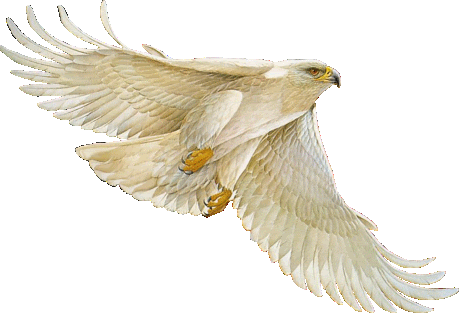Just a place for all my favourite raptor images, and stories. Will include peregrin falcons during this years season.
Wednesday, April 22, 2009
Tuesday, April 21, 2009
St. Vrain Bald Eagle Nest - failed nest 3 EYAS dead
Male went missing, and the female eagle could not feed and keep the EYAS warm,
This slide show,, is excellent though to show Eagles building their nest.
I hope the female, can find a new mate, and re-clutch new eggs,, season is still early,
we may yet, have EYAS fledge from this nest,,
Slide show,, link
http://fsvfolks.smugmug.com/photos/swfpopup.mg?AlbumID=6159240&AlbumKey=L98ap
Update - April 21, cam is now offline they have pulled the entire page for the time being.
Friday, April 17, 2009
First Hatch at SF!
this cam is daylight only,,,
link to cam,,
http://www2.ucsc.edu/scpbrg/falconcamera.htm
thanks for the catch EI!!
Peregrin Falcon Eggs About to Hatch?? = San Francisco Scape
>>
Incubation has been going on for about a month. Today, Diamond Lil is wiggling
on the eggs and periodically looks down on them. She has been on them for quite a long time. Rather than do an exchange of duties, Dapper Dan just brought her some food, which she proceeded to mantle.
>>
http://www2.ucsc.edu/scpbrg/falconcamera.htm
Thursday, April 16, 2009
Mariah Update on Imprints
with a new pair of falcons. These new falcons are banded, but, have not been
identified yet.
Mariah was taken to a DEC vet,, in Syracuse New York,,
here is the latest update, in imprints,,
http://rfalconcam.com/imprints/
And Jim Piscello,, has a new posting in his blog, about the new pair,
http://marchlords.com/birdblog/
It's sad that Mariah and Kaver's reign has come to a end in the skys over
Rochester,, New York,, but they have given us 11 years of a very intimate
glimpse into the lives of Peregrin Falcons. We have watched via the
web cams, as they courted,, laid eggs, raised Eyas,, and fledged them to
the wind and sky.
To even have territorial fights,, is a blessing in disguise,, because short
years ago,, the Peregrin Falcon,, was too rare, the population too small
to play out this ancient drama of the reproductive imperative.
We were lucky with Mariah,, karma,, has a way,, and she was rescued
by her most LOYAL 2 fans,, Carol P and Brian H,,from certain death.
If they had not been there, we would have been left,, always wondering
what became of her. Like we wonder about Kaver, and other falcons
we have come to know and love, on the web cams.
I hope Mariah recovers from her injuries, but feel doubtful, she would
prevail for long,, released back to the wild. Older falcons, tend to die
in battles,, like Mae did at King plant. In the raptor world,, it is
truly the youngest and fittest that prevail.
But this is the way of nature, and we can look forward to this new Tiercel
and his mate,, at Rochester,, hopefully they move into one of the cam
scrapes, and we can begin a new cycle of Peregrins raising Eyas,
right in front of our very eyes.
Tuesday, April 7, 2009
Sunday, April 5, 2009
Long thought extinct, Carolina Parakeet rediscovered in Honduras
FOR RELEASE: April 1, 2009
rediscovered in Honduras Captive bird and radio tagged individual shows a non-migratory population survives in vast forested areas ITHACA, NY. -- Long believed to be extinct,--the Carolina
confirmed sighting of the species in the United States, a research team today announced that a small non-migratory population survives in vast areas of neotropical forest in Honduras. A full report is due to be
"The bird we currently have in captivity, the individuals While parrots are not known as long distance migrators, DNA analysis from feathers taken from the birds in
migratory birds is not as strange as it may seem,' says co-author Juan Decares. "The Canada Goose re-introduced across North America is essentially non-migratory in much of its range. While Canada Geese used to migrate though the United States to breed in Canada, there are year-round populations in many parts of the country and they are breeding further south than they did historically. It should not be thought of as uncommon for birds to lose their migratory ability." "Amazingly, America may have another chance to protect the An exotic species, the Monk Parakeet, has thrived where While the establishment of new non-migratory populations Studies done by German researchers have shown that The only member of the parrot family in North America, the *** The Cornell Lab of Ornithology is a nonprofit The Nature Conservancy is a nonprofit organization |
Followers
Blog Archive
-
▼
2009
(39)
-
▼
April
(9)
- Red Tailed Hawk Cam
- St. Vrain Bald Eagle Nest - failed nest 3 EYAS dead
- Closeup Vid,, of Eyas Hatch at SF
- First Hatch at SF!
- Peregrin Falcon Eggs About to Hatch?? = San Franci...
- Mariah Update on Imprints
- Awesome Pics of Dapper Dan in San Francisco
- Neil's New Video from Scotland - Peregrins
- Long thought extinct, Carolina Parakeet rediscover...
-
▼
April
(9)



